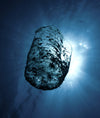Among all the pollution present in the ocean, plastic waste represents a large majority and unfortunately this is constantly increasing. It is now impossible to ignore the seriousness of the situation and the images that may seem shocking, of rubbish strewn on the beaches and the seaside, greatly threatening marine fauna.
However, waste, whether it be glass, fabric or even metal, is only the result of different human activities. But Le Vent à la Française could not remain inactive, so it seemed essential to us to inform you and make you aware of the impact of marine pollution because it is a subject that is particularly close to our hearts.
It is by finding solutions together that we can move forward, progressing little by little. Our philosophy is precisely based on moving forward together, because alone we go faster, together we go further.
Historical
The appearance of plastic
Since the beginning of human history, Man has been striving to propose and develop innovative materials in order to unearth advantages that are complex or even impossible to find in natural materials. Before arriving at these alternative means, certain materials offered plastic properties such as chewing gum or shellac. But not enough for human production and consumption, Man then remedied this fact by chemically modifying these same materials of natural origin, in order to arrive at rubber, collagen and nitrocellulose.
It was only about a hundred years ago that the modern plastics that we know today were born. Indeed, one of the very first contemporary plastics was designed thanks to Alexander Pares, in 1855. Initially named Parkesine, it is possible to distinguish it today under the title of Celluloid.
In 1907, another breakthrough emerged when the chemist Leo Baekeland invented Bakelite, a completely synthetic plastic that could be mass-produced. Since these inventions, many other plastics have been invented to incorporate your homes, offices and even the vehicles you use.

What is plastic?
Much appreciated for its lightness, it is a durable material that withstands any test, while offering the possibility of being able to design large products with reduced and limited weight. Renowned for its long life, it features very slow wear and simplified maintenance. In short, plastic is a very practical and economical material because it easily resists shocks as well as various temperature variations.
However, to obtain this plastic material, you have to go through the transformation of coal, oil or natural gas. To better understand the diversity of existing plastics, it is necessary to know how to distinguish the category of thermoplastics, namely a plastic which melts under the effect of heat and which solidifies with the help of cooling. Conversely, the second category corresponds to thermosets, the transformation of which remains irreversible, that is to say which is impossible to deform.
Devastations
Plastic in the oceans
Despite all its qualities in terms of practicality, the supremacy of plastic is beginning to be challenged because plastic waste has a considerable impact on the planet, threatening it. Indeed, a WWF study dating from 2019 evokes the seriousness of the situation since there is today ⅓ of plastic waste produced worldwide, which is found abandoned in nature.

To give you an idea, approximately 8 million tonnes of this same waste comes from the land and ends up in the oceans. Unfortunately, materials made of plastic represent up to 95% of aquatic and marine litter in some places around the world.
It is precisely following this dramatic observation that it was concluded that disposable products should gradually be withdrawn from sale in order to reduce their environmental footprint. The idea of collection and recycling has also emerged in recent years to provide concrete solutions.
Havoc of fishing lines
In the same vein, you should know that there are approximately 640,000 tonnes of fishing equipment such as nets that are abandoned at sea each year according to Greenpeace. Between nets, life jackets, ropes, it's a real death trap for marine life.
This plastic waste is too often ingested by aquatic animals which end up choking on it. That's not all, because by washing up on the coast, this accumulation of waste endangers each of the ecosystems as well as the many habitats of animal species.
What we do today
Plastic management on our territory
In order to restore cleanliness and vitality to the oceans, many regulations have been put in place to ensure the proper treatment of waste and harmful products. Maritime reserves are multiplying and expanding to contribute to very strict control of fishing, oil tankers and all the factors that can dump waste into the oceans. Each of this aquatic waste is now classified according to its size, being floating, stranded, submerged, solid or persistent to guarantee exemplary traceability.
Many awareness-raising measures have been introduced to prevent and inform about the impact of plastic waste deposits. The territory also takes many actions, such as the mobilization of a large number of people to pick up waste that has the unfortunate tendency to pollute the seas and oceans. By mobilizing in this way, it is then possible to take up the challenge of zero waste at the local level.
Removing single-use plastic packaging is also one of the solutions that can help reduce marine pollution. These can then be replaced by eco-responsible and sustainable alternatives. It is thus at the source that we must act, by first stopping to over-consume.
It is therefore not only on World Oceans Day that we must act for the environment, but on the contrary, by respecting recycling and the consumption of recycled materials, it is not there is nothing better to help the oceans.


































































































































